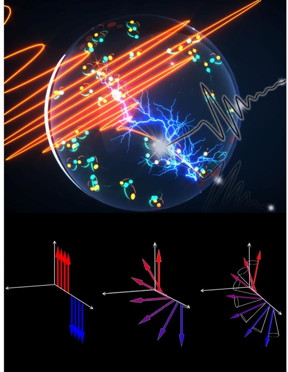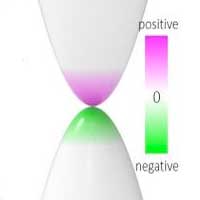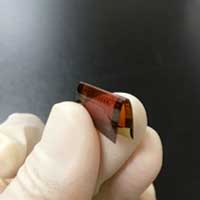Home > Press > Scientists use light to accelerate supercurrents, access forbidden light, quantum worldThis illustration shows light wave acceleration of supercurrents, which gives researchers access to a new class of quantum phenomena. That access could chart a path forward for practical quantum computing, sensing and communicating applications. CREDIT ...
Oriented hexagonal boron nitride foster new type of information carrier
May 22, 2020 (Nanowerk News) Valleytronics gives rise to valley current, a stable, dissipationless current which is driven by a pseudo-magnetic field, Berry curvature. This gives rise to valletronics based information processing and storage technology. A pre-requisite for the emergence of Berry curvature is either a broken inversion symmetry or...
Nanotechnology Now – Press Release: Nexeon Appoints New Chairman
Home > Press > Nexeon Appoints New ChairmanAbstract:Nexeon - the company developing silicon materials for next generation lithium ion batteries - has appointed Andrew Hosty as its new Chairman. Dr Hosty, who takes up the post with immediate effect, has a strong background in engineering and technology with a focus...
Astronomers spot twinkling heart of milky way
May 22, 2020 (Nanowerk News) Astronomers using the Atacama Large Millimeter/submillimeter Array (ALMA) found quasi-periodic flickers in millimeter-waves from the center of the Milky Way, Sagittarius (Sgr) A*. The team interpreted these blinks to be due to the rotation of radio spots circling the supermassive black hole with an orbit...
Nanotechnology Now – Press Release: Scientists break the link between a quantum material’s spin and orbital states: The advance opens a path toward a new generation of logic and memory devices based on orbitronics that could be 10,000 times faster than today’s
Home > Press > Scientists break the link between a quantum material's spin and orbital states: The advance opens a path toward a new generation of logic and memory devices based on orbitronics that could be 10,000 times faster than today'sThese balloon-and-disc shapes represent an electron orbital -- a fuzzy...
New gravitational-wave model can bring neutron stars into even sharper focus
May 21, 2020 (Nanowerk News) Gravitational-wave researchers at the University of Birmingham have developed a new model that promises to yield fresh insights into the structure and composition of neutron stars. The model shows that vibrations, or oscillations, inside the stars can be directly measured from the gravitational-wave signal alone....
Nanotechnology Now – Press Release: Oil & gas and automotive sectors will benefit from durable polymers with graphene nanotubes
Home > Press > Oil & gas and automotive sectors will benefit from durable polymers with graphene nanotubesAbstract:Oil & gas, automotive, chemical processing and other industries that deal with the harshest heat and chemical conditions are now able to utilize high-performance fluoroelastomers with graphene nanotubes that guarantee continuous production operations...
Massive rotating disk galaxy challenges the traditional models of galaxy formation
May 20, 2020 (Nanowerk News) In our 13.8 billion-year-old universe, most galaxies like our Milky Way form gradually, reaching their large mass relatively late. But a new discovery made with the Atacama Large Millimeter/submillimeter Array (ALMA) of a massive rotating disk galaxy, seen when the universe was only ten percent...
Nanotechnology Now – Press Release: Twisting 2D materials uncovers their superpowers: Researchers have developed a completely new method for twisting atomically thin materials, paving the way for applications of ‘twistronics’ based on tunable 2D materials
Home > Press > Twisting 2D materials uncovers their superpowers: Researchers have developed a completely new method for twisting atomically thin materials, paving the way for applications of 'twistronics' based on tunable 2D materialsThe twist angle between the layers governs the crystal symmetry and can lead to a variety of...
Making flexible thin-film electronics more durable
May 18, 2020 (Nanowerk News) Researchers from Daegu Gyeongbuk Institute of Science and Technology develop a simple approach for controlling the otherwise random formation of cracks in flexible thin-film conductors, greatly increasing the durability of flexible electrodes and transistors against bending and folding. The prospect of the widespread commercialization and...










